The AMD Radeon R9 Nano Review: The Power of Size
by Ryan Smith on September 10, 2015 8:00 AM ESTMiddle Earth: Shadow of Mordor
Our next benchmark is Monolith’s popular open-world action game, Middle Earth: Shadow of Mordor. One of our current-gen console multiplatform titles, Shadow of Mordor is plenty punishing on its own, and at Ultra settings it absolutely devours VRAM, showcasing the knock-on effect that current-gen consoles have on VRAM requirements.
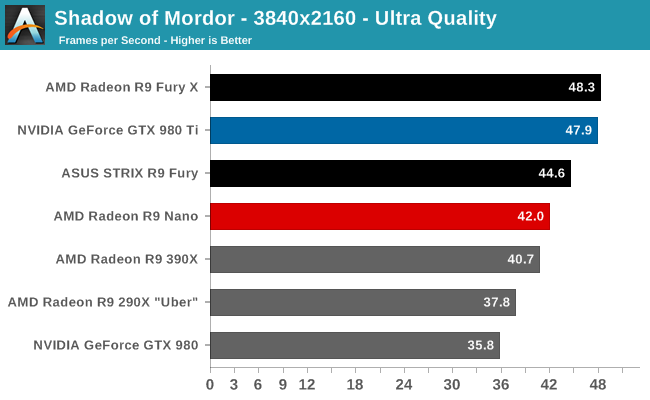
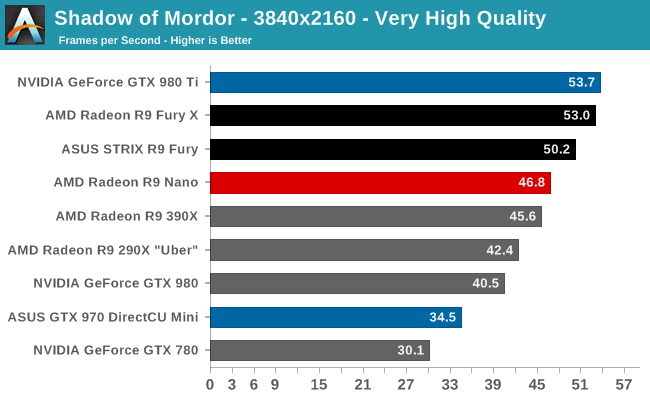
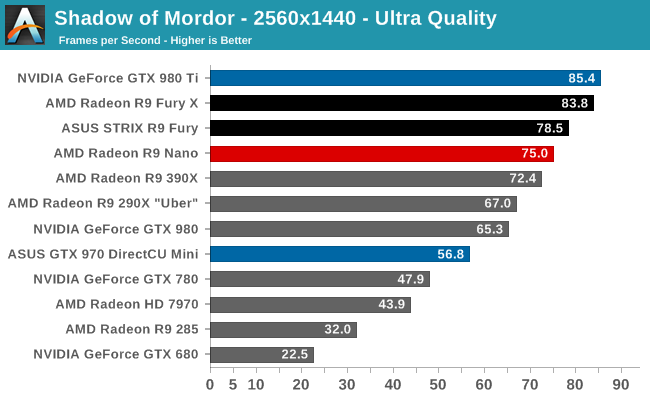
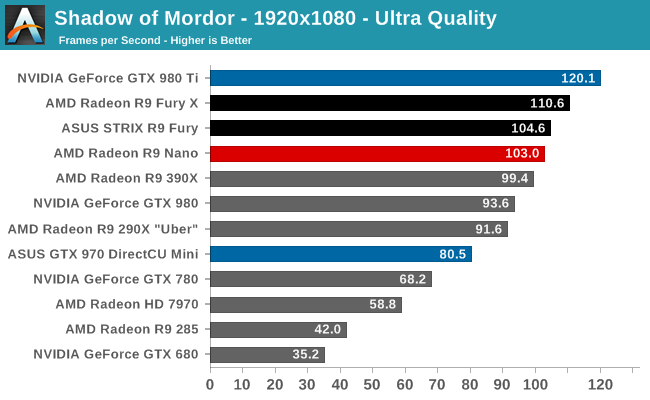
Both of AMD’s Fury cards have handled Shadow of Mordor well in the past, and R9 Nano is no exception. The R9 Nano ends up trailing the R9 Fury X and R9 Fury by around 13% and 7% respectively, not too far off from their respective overall averages. Otherwise compared to NVIDIA’s offerings the R9 Nano clearly trails the similarly priced GTX 980 Ti, but enjoys a very comfortable margin over the likes of the GTX 980 and GTX 970 Mini.
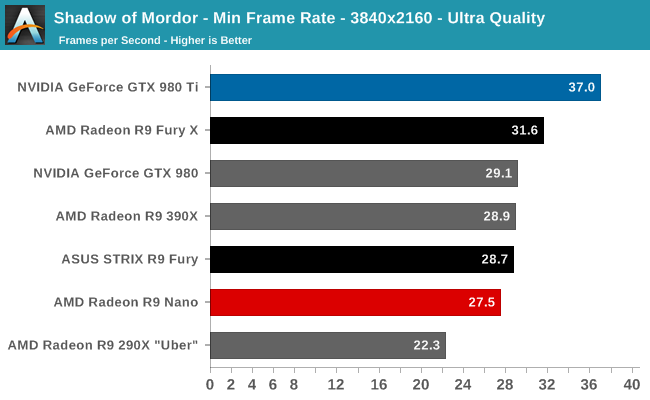

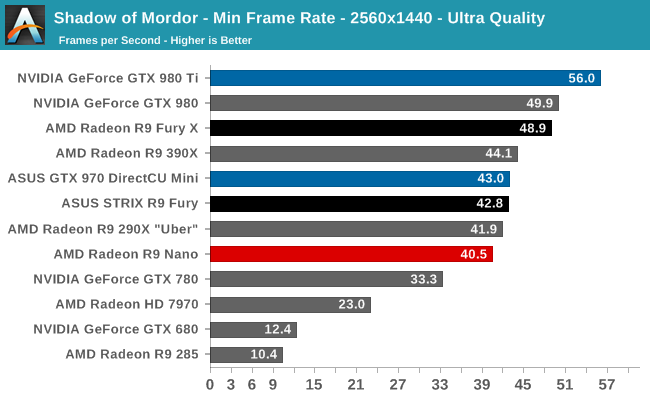
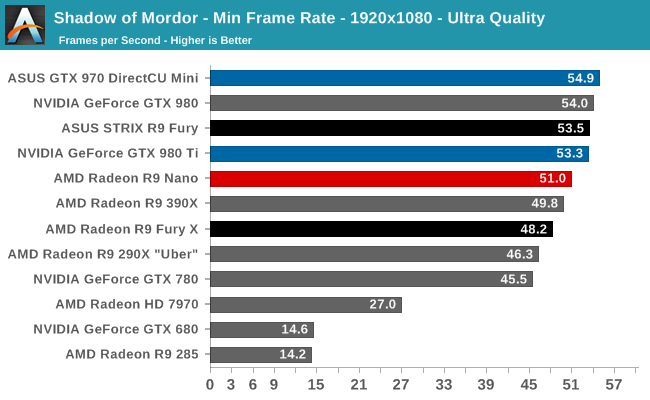
Minimum framerates on the other hand also inherit the other Fiji cards’ weaknesses. AMD actually doesn’t fare too poorly here, however the toll of being slower than the R9 Fury doesn’t do the R9 Nano any favors. Below 3840x2160 the R9 Nano feels the pinch of the GTX 980 and GTX 970 Mini, falling behind these cards.










284 Comments
View All Comments
Qwertilot - Thursday, September 10, 2015 - link
Also Intel's 35w quad cores seem to be getting rather fast nowadays, so overall system power/a very quiet CPU cooler is much easier to handle. Not many really tiny cases mind.Also maybe a question of if you want to go one fan for something with this much power draw - it can be tamed to very, very quiet by 2 fan designs.
mosu - Thursday, September 10, 2015 - link
I wonder how Nvidia will manage HBM2 with no previous experience with HBM. Maybe TSMC will borrow some for them...nathanddrews - Friday, September 11, 2015 - link
Probably just fine seeing as they have been designing Pascal for a few years and they just began sampling a few months ago, meaning they likely have working chips in their labs right now. AMD managed fine with their first implementation. Intel seems to be doing well with their version of stacked memory. Samsung and Toshiba are also doing fine. No one would be bringing it to the consumer market if they didn't already have a good handle on it.Michael Bay - Thursday, September 10, 2015 - link
I will be an asshole and remind everybody that there is _still_ no 960 review.MrSpadge - Thursday, September 10, 2015 - link
What exactly would you expect from an AT review now that can not already be found elsewhere? I know they said a review would be coming, but seriously.. let them focus on important topics.bill.rookard - Thursday, September 10, 2015 - link
You are absolutely right. On both points.Mikemk - Thursday, September 10, 2015 - link
Really?extide - Thursday, September 10, 2015 - link
They SAID that there will not be a 960 review.Oxford Guy - Thursday, September 10, 2015 - link
Because the 960 was a poor product that made Nvidia look bad?D. Lister - Wednesday, September 16, 2015 - link
No, because AT was understaffed and they kept delaying it, until they realised that they were so late (compared to other sites) that the meager hits their review would get, wouldn't be worth the effort that they would have to put in.As for your inability to find a review, allow me to assist:
https://www.google.com/search?q=960+review&rlz...